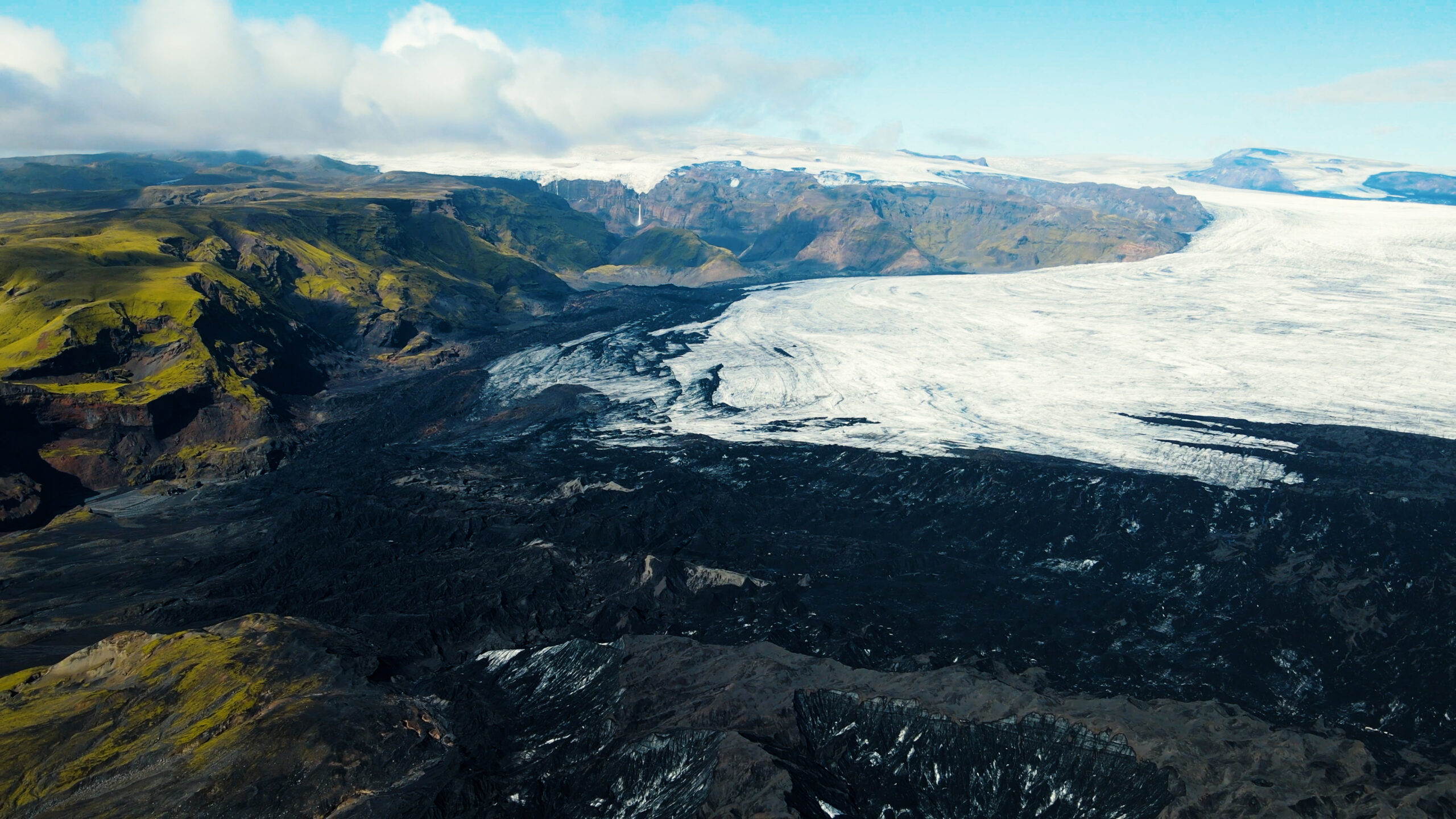5 Things You Didn’t Know About Katla Volcano
Iceland has some of the most powerful volcanoes in the world. Katla Volcano is one of the most impressive. It lies under the massive Mýrdalsjökull glacier in South Iceland. Katla combines raw power, a fascinating history, and rich folklore.
In this article, we’ll explore five surprising facts about Katla Volcano, including its eruptions, geological features, myths, and why it continues to captivate scientists and travelers alike.
1. Katla Volcano is One of Iceland’s Most Powerful Volcanoes
Katla volcano is a giant of nature. Its eruptions are among the strongest in Iceland. They can send ash clouds high into the sky. When it erupts, the ice of Mýrdalsjökull melts quickly. This causes sudden glacial floods called jökulhlaups in Icelandic.
These floods can reshape rivers, valleys, and even roads in just a few hours. Locals have always respected Katla’s power. For centuries, people left offerings to appease the spirits they believed lived there. Today, scientists monitor Katla with advanced instruments. They track earthquakes and ice movements to predict its activity.
Visiting the region gives you a sense of its raw energy. Black sand deserts, glacial rivers, and volcanic formations surround the volcano. Every corner shows how powerful Katla volcano truly is.
2. Hidden Under the Ice: Katla’s Unique Location
One of the most fascinating things about the Katla volcano is that you cannot see it directly. It is completely covered by the Mýrdalsjökull glacier. The ice makes it look calm, but underneath, there is a massive caldera about 10 kilometers wide.
Scientists study Katla with radar, seismographs, and aerial surveys. These tools help predict possible eruptions. Visitors cannot see the volcano directly, but they can explore its surroundings. Hiking trails, black sand deserts, and nearby rivers allow you to experience the area safely.
The hidden nature of Katla adds mystery. It is a reminder that even what looks peaceful can hide immense power. Experiencing the glacier and volcano up close is unforgettable.

3. The Meaning Behind the Name
Did you know that “Katla” is also a common name in Iceland? Many Icelandic girls are named after the volcano, inspired by its strength and energy. This shows how deeply Katla is part of local culture.
But literally, the name “Katla” means “kettle” or “cauldron” in Icelandic. This is a perfect description of its enormous caldera. The volcano is like a simmering pot of geothermal energy beneath the ice.
Icelandic volcanoes often have names tied to their shape or legends. Katla’s name reminds locals and visitors of its hidden force. For centuries, stories and songs described its power. It is said to guard the southern highlands. The name also evokes adventure and caution. Even Netflix has a series called “Katla,” inspired by the volcano.
4. Katla Volcano’s Last Eruption and Activity
The first recorded eruption of Katla volcano happened in 930. The next eruption was not documented until 1625. Since then, five more major eruptions occurred: 1660, 1721, 1755, 1823, and 1918. They happened roughly every 40 to 80 years. Over 100 years have passed since the last eruption. Icelanders are expecting Katla to erupt at any moment, although no significant seismic activity has been detected.
Katla is a sleeping giant under the Mýrdalsjökull glacier. When it erupts, it can produce explosive ash clouds. It can also trigger dangerous glacial floods. Nearby communities, especially the town of Vík, have evacuation plans. The local church is the safest high point. Monitoring glacial rivers helps predict jökulhlaups and protect residents.
Visitors can explore the surrounding landscapes and learn about Katla’s power. They can see how eruptions have shaped the land, history, and culture of southern Iceland. Every eruption has left a mark. Katla may be dormant, but it is a powerful and fascinating force in Iceland’s landscape.
5. Katla’s Folklore, Mythology, and Stories
Katla is not just a volcano—it is part of Icelandic legend. For centuries, locals have woven tales of mythical creatures, spirits, and divine forces into the story of Katla.
One famous story tells of a small demon that lived near the glacier. The demon was mischievous, sometimes stealing supplies from travelers or untying their horses. People believed that during eruptions, the demon’s anger caused floods and ash clouds. A passing priest supposedly trapped the demon inside a boulder using holy runes. Locals say that if you stand near the boulder on a windy day, you can still hear faint scratching, as if the demon is restless beneath the rock.
Other legends say that giants and trolls moved under the ice, or that a dragon sleeps deep inside the volcano, waking only when the land must be reshaped. These stories became part of Icelandic culture, reminding people of the power of nature and inspiring awe for generations. Even today, visitors can feel this mysterious energy while exploring the glacier’s edge or listening to local guides share the myths.
Discover the Power and Mystery of Katla Volcano
Katla Volcano is not just a geological feature. It is a place of adventure, science, and legend. From its immense power to its ice-covered caldera, it fascinates both scientists and travelers. Visiting Katla allows you to see Iceland’s natural forces up close.
Whether you are interested in the Katla Volcano last eruption, the legends surrounding its ice-covered caldera, or exploring South Iceland’s dramatic landscapes, a tour is the best way to experience it.
At Katlatrack, we provide guided adventures that combine safety, knowledge, and breathtaking views. Don’t just read about Katla—come and stand at the edge of one of Iceland’s most legendary volcanoes.
More from our blog
